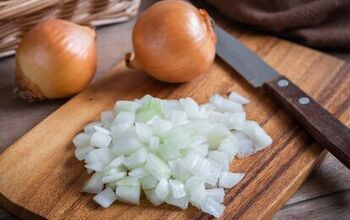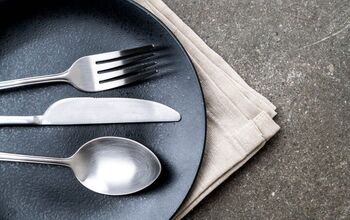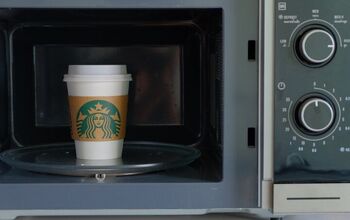Can You Put Silicone In The Microwave? (Find Out Now!)

Silicone is a synthetic polymer that’s often used for disposable items, like coffee cups or cereal bowls. You may get the urge to throw your coffee in the microwave for a midday warm-up- but can you even put silicone in the microwave?
You can safely put silicone in the microwave, as it has an 842 degree-Fahrenheit ignition temperature and is generally heat-resistant. The best practice is to microwave only one silicone item at a time, in 2-minute increments, on ‘medium’ heat. Fill your food or liquid 75% of the way full to make room for expansion and limit spills.
Above all, consult the product’s packaging to see if it’s deemed “Microwave Safe.” If it’s not, do not microwave it!
Follow along to learn if it’s safe to microwave silicone, the best practice in doing so, and what not to do. We’ll also cover if silicone or plastic is a safer option for microwave use.
Is It Safe to Put Silicone in the Microwave?
The beauty of hot tea in a silicone cup is that your fingers don’t feel an ounce of heat. Does this mean that silicone is safe for use in the microwave?
Silicone doesn’t absorb microwave radiation, allowing for the components inside to heat up and the container to remain at room temperature. This alone makes silicone a great option for the microwave.
In general, silicone is described as “heat resistant” and can withstand up to a whopping 428 degrees Fahrenheit before degrading. It’s also deemed chemically stable and non-toxic.
Certain types of silicone- like those used for baking sheets- can withstand the high heat of the microwave, so they’re safe to use. However, other items- like smaller utensils or molds- may not be as heat resistant and could melt or warp in the microwave.
At the right temperature, you don’t have to worry about it melting into your food!
The Best Way to Use Silicone in the Microwave
There are a few recommendations to follow when using silicone containers to reheat your meal in the microwave.
The safest way to use silicone in the microwave includes:
- Only using one container at a time
- Filling your food or liquid a maximum of 75% full (this prevents overflowing, as heat expands)
- Setting your microwave to ‘medium’ power; although silicone can withstand some serious heat, it’s better to err on the side of caution.
- Not placing any metal inside with it, as metal is an electricity conductor
- Nuking your food in 2-minute increments; this prevents burning and allows you to keep an eye on the silicone container.
Even though silicone is fairly indestructible (when it comes to heat, at least), adhering to these guidelines will help make sure your dinner is reheated to perfection.
What Not To Do When Using Silicone in the Microwave
Now that we discussed how to best use silicone in the microwave, there are a few things worth mentioning to avoid.
Here’s what not to do when putting silicone in the microwave:
- Place a plastic or metal covering on top.
- Try microwaving more than one silicone item at a time.
- Fill the bowl or cup all the way up (leaving no room for expansion).
- Microwave your meal for longer than 2 minutes at a time.
- Put the silicone container too close to the edge of the turntable. It could get caught between the edge or fall, creating a mess and a hazard.
Like anything, silicone is incredibly safe to microwave when used properly.
Microwaves can become a dangerous kitchen appliance if the wrong power level, amount of heating time, or container material is used. Don’t forget that it still uses radiation to get the job done.
Refer to the guidelines above to safely heat your food!
Is Silicone Safer Than Plastic in the Microwave?
Overall is silicone safer to use in the microwave versus plastic?
Generally speaking, silicone is much more durable and safe for microwave-use, when compared to plastic. There are a few reasons for this.
- Silicone’s ignition temperature is an incredible 842 degrees Fahrenheit, while plastic will catch flame at around 400 °F.
- Silicone won’t leak toxins into your food because it doesn’t contain any. Plastic can be laden with harmful toxins (like cancer-causing BPA) that will be released when exposed to heat.
- Plastic is less durable and more likely to break or melt in the microwave.
- Silicone is also considered more environmentally friendly than plastic because of its chemical makeup.
In the end, silicone is the safer choice for microwave use because it doesn’t melt at extreme temperatures and won’t put you at risk of exposure to dangerous and potentially deadly toxins.
Using plastic in the microwave should generally be avoided- unless it’s quick reheat (with no other options) or the item is explicitly labeled “Microwave Safe.”
Related Questions
Can you put silicone in the oven?
Silicone is, in fact, suitable for use in the oven as long as it’s designated as bakeware or cookware.As was mentioned above, most silicone items can tolerate up to 428 degrees Fahrenheit before changing form and losing structure/function. If the cooking temperature stays below that, you’re good to use silicone for your oven dish.In fact, silicone is also very freezer-friendly! Try freezing water in a silicone cup. Once the water is solid ice, peel back part of the silicone to reveal a cold massage tool for the face or body.
Can you put silicone in the dishwasher?
Items made of silicone have so many applications. They’re also incredibly easy to clean.Throw silicone cups, plates, or bakeware on the top shelf of your dishwasher to be run on a regular cycle. The only trick is, they must either be weighed down or sandwiched between two heavier items.Because silicone is so light, this tactic will prevent your container from getting washed to the bottom of the dishwasher during a cycle.
Is silicone recyclable?
Like so many reusable items, silicone is also recyclable. However, it can take a little finesse on your behalf.It’s not biodegradable, so it must be disposed of properly. It often requires being sent into a different location from your usual recyclables. Call your local waste management or check their website to see where you can recycle your silicon products.
To Sum It Up
Silicone is safe to use in the microwave, but there are a few things you should know before reheating your food:
First and foremost, don’t place any plastic or metal on top of your silicone container while microwaving- this will cause unwanted electricity and could be dangerous for anyone near the appliance when this happens.
Next, try not to put more than one thing made out of silicone into the microwave at once. Too many items in the microwave at a time can cause a fire hazard, regardless of their material makeup.
Lastly, make sure that before cooking anything with silicone in the microwave or oven that the temperature inside doesn’t exceed the limit of 428 degrees Fahrenheit.
Always refer to the packaging and manufacturer’s labeling before attempting to use your silicone products, or anything for that matter, in the microwave. If you can’t find anything on the container or company website, and you’re still unsure, reach out to the company directly- it’s better to be safe than sorry!

Emily is a copywriter with over five years of experience in crafting content for the home renovation and remodeling industry. She loves house projects, whether it be painting a room or tweaking small design elements to transform a space. Her favorite aesthetic is french modern because of its clean lines and airy feeling! When not writing, Emily loves to travel and check out architectural details all over the world.
More by Emily Carr



























